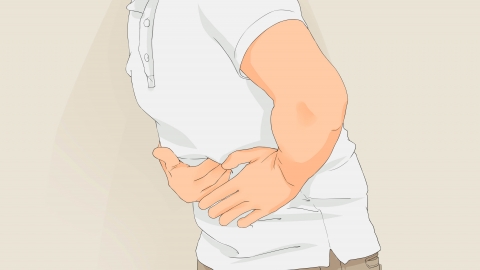What are the symptoms of acute suppurative cholangitis?
Acute suppurative cholangitis is generally an emergency condition caused by biliary obstruction combined with bacterial infection. Symptoms include severe pain in the right upper abdomen or epigastric region, chills and high fever, jaundice of the skin and sclera, early signs of shock, nausea, and vomiting. The details are as follows:
1. Severe pain in the right upper abdomen or epigastric region
This is usually the initial symptom, presenting as persistent colicky or distending pain that may radiate to the right shoulder or back. The pain results from a sudden increase in intraluminal pressure due to biliary obstruction, which stimulates nerve endings in the bile duct wall. Inflammation also involves the surrounding peritoneum, leading to a combination of visceral and somatic pain. The severity of pain correlates positively with the speed of obstruction and the degree of pressure elevation.

2. Chills and high fever
Occurring in over 90% of cases, this manifests as sudden chills followed by a rapid rise in body temperature to 39–40°C, typically presenting as remittent fever. After biliary obstruction, bacteria—commonly *Escherichia coli* and *Klebsiella* species—multiply rapidly within the biliary tract, invade the bloodstream through the bile duct wall, and cause bacteremia. Toxins released by these bacteria stimulate the hypothalamic thermoregulatory center, resulting in high fever.
3. Jaundice of the skin and sclera
Typically appears 1–2 days after the onset of pain and fever, characterized by yellow discoloration of the skin and whites of the eyes, darkened urine (tea-colored), and pale stools. Biliary obstruction prevents normal bile excretion, causing bilirubin to reflux into the bloodstream. The severity of jaundice correlates with both the level and duration of obstruction.
4. Early signs of shock
In severe cases, patients may exhibit restlessness, cold and clammy extremities, mottled skin, and mild hypotension. These manifestations result from septic shock triggered by severe infection. Bacterial toxins suppress myocardial contractility and cause peripheral vasodilation, leading to inadequate circulatory perfusion. Without prompt intervention, this can progress to severe shock.
5. Nausea and vomiting
Present in approximately 70% of patients, vomitus typically consists of gastric contents and may contain bile in severe cases. Biliary inflammation irritates the vagus nerve in the gastrointestinal tract, disrupting normal gut motility and delaying gastric emptying. Frequent vomiting can exacerbate dehydration and electrolyte imbalances.
Immediate medical attention is required upon the appearance of the above symptoms. Prompt relief of biliary obstruction and effective anti-infective therapy are essential to prevent progression to multi-organ failure.








